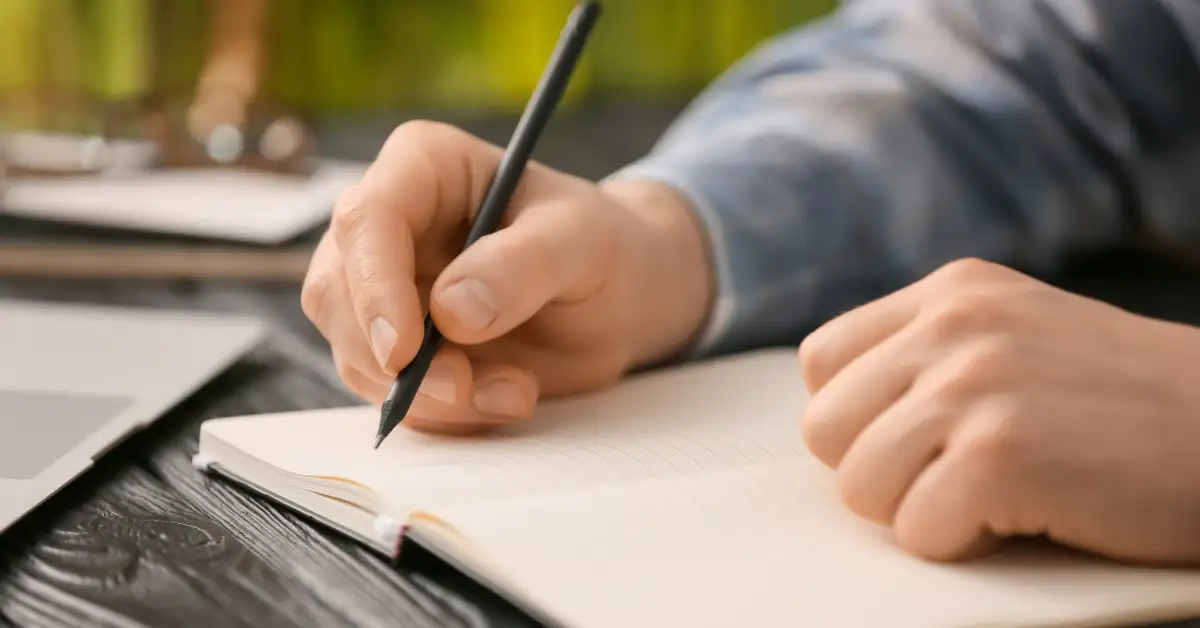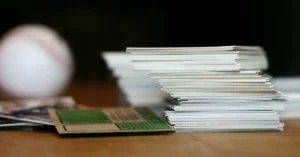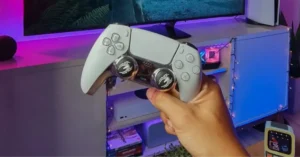Unleash your artistic talents with my expert guidance: how to draw NBA players? Learn essential techniques and tips for capturing the likeness of your favorite basketball stars.
How to Draw NBA Players: Getting Started
Before you dive into drawing NBA players, it’s essential to understand the basic shapes that make up the human body and to select the right materials that will help you sketch with confidence.
Understanding Basic Shapes and Proportions
When starting your drawing of a basketball player, it’s crucial first to break down the figure into basic shapes. Each player’s body can be simplified into geometric forms like circles, rectangles, and triangles.
Proportions are equally important – getting the head size to the body and limb length ratio is key to achieving a realistic depiction of an athlete.
Here’s how you can approach it:
- Head: Start with a circle or oval for the head.
- Torso: Represent the torso with a rectangle.
- Limbs: Use elongated ovals for arms and legs.
- Musculature: Add smaller shapes to define muscle groups.
Choosing the Right Drawing Materials
Your drawing experience will be much smoother with the correct set of drawing materials. Select a high-quality paper or sketchbook that can withstand erasing and layering. Here’s a simple list to help you gather the essentials:
- Sketchbook/Paper: Smooth, durable, and within your preferred size.
- Pencils: Ranging from hard (H grades) for light, sketchy lines to soft (B grades) for dark, definitive lines.
- Eraser: A kneaded eraser is flexible and perfect for lifting graphite without damaging your paper.
Creating a Foundation

Sketching the Silhouette
Begin by outlining the player’s silhouette, keeping the pose energetic yet natural. Draw a line representing the action or stance of your NBA player; this is the centerline of your silhouette. The silhouette should capture the essence of movement, whether it’s a leap for the basket or a sprint down the court. Use light strokes, and don’t worry about details—get the flow of the pose.
Adding Structure to Limbs and Torso
Once satisfied with your silhouette, it’s time to firm up the body parts. Picture the torso as an oval shape or a combination of rectangles for the chest and hips to give it a more structured form.
From there, refine the limbs with additional shapes like circles for joints and elongated ovals for muscles, ensuring everything is proportionate.
Detailing the Figure

Drawing Facial Features and Hair
Begin by sketching the basic shape of your player’s face. Remember that each player has unique characteristics; for example, some have a strong jawline or pronounced cheekbones.
Focus on these unique traits to capture the player’s likeness. For eyes, draw them aligned with the top of the ears. The nose typically lines up with the bottom of the ears, and the mouth is generally one eye-width apart.
When it comes to hair, observe the texture and how it falls or shapes the head. Does your player have tight curls, short buzzed hair, or a dynamic hairstyle on the court? Render the hair with strokes that follow the hair’s direction and growth pattern.
Capturing the Basketball Uniform
Now, let’s draw the uniform, which includes the jersey, shorts, and accessories. The jersey should be drawn with a slight drape, paying attention to the folds to imply movement. Symbolism and number placement are important aspects of the jersey, so accurately depict logos and numbers.
Shorts are usually baggy, offering room for the player to move freely. Draw them so they hang naturally over the legs. For shoes, consider the specific design and how laces and patterns appear. Basketball players often wear distinct sneaker designs that can be intricate, so take your time with these details.
Accessories such as sweatbands and arm sleeves should be added last, ensuring they don’t overpower the overall figure. Remember, each accessory can add personality and authenticity to your player, so include them as you see fit.
Bringing Your Drawing to Life

Mastering Shading Techniques
Consider where the shading and highlights fall on your player to create a three-dimensional appearance. Start by shading areas that are furthest from the light source, generally under the arms, along the side of the torso, and beneath the shorts. Use a combination of gentle strokes for lighter shadows and bold strokes for deep shadows.
Remember, the closer a body part is to the light, the lighter the shading should be. To create the effect of muscle definition, use curved strokes that follow the body’s natural contours. Your pencil should be sharp for tight, detailed areas like the fingers and duller for broader shading like the player’s uniform.
Light Source and Texture
Identifying your light source is critical; it informs where to place shadows and highlights, which add depth and shape to your drawing. Is the light coming from above, like in an arena? Or is it coming from one side? Lightly sketch arrows on your draft to indicate the direction of the light — these will guide you as you develop the textures.
Different materials reflect light differently. For instance, the sheen of a jersey is different from the texture of skin or hair. Observe these textures closely — a jersey might have a smooth, reflective surface, while skin could show a more subtle gradation of tone. To replicate texture, vary your shading technique: tight crosshatching can represent fabric, while smoother shading could represent skin.
To enhance the texture further, add highlights with an eraser or by leaving areas of the paper white where the light is most directly striking the player’s features. This contrast between shadow and light will bring your NBA player to life with vibrant detail and realism.
Finishing Touches

Refining Details and Cleaning Up the Sketch
Your next step is to refine the details of your NBA player. Look at your drawing and compare it with real players’ body structure and dynamics. Refine the muscles, jerseys, and facial features. Erase any extra lines from your initial sketch to clean up your drawing. This makes the player look more realistic and sharp.
Adding Background and Context
Adding a basketball court behind your player can provide context to your drawing. Sketch a simple court outline with a hoop in the background. You could add elements like fans, a scoreboard, or even other players to create a dynamic scene. Ensure these elements don’t overpower the main subject of your artwork – your NBA player should remain the show’s star.
Practice and Sharing

To excel in depicting NBA players on paper, embracing regular practice and engaging with a community through social media can play pivotal roles in your artistic growth.
Repeating the Process for Improvement
Practice makes perfect when you learn how to draw NBA players. Sketch your favorite athletes repeatedly to understand their distinct features and movements better. Each session helps to refine aspects like proportion, gesture, and expression. You’d be surprised how fast your hand steadies and your lines become more confident with every repetition.
FAQ
How do you draw the NBA symbol?
To draw the NBA symbol (logo), start by sketching a large half-circle to form the outline of the basketball. Then, draw two curved lines inside the half-circle to represent the seams of the basketball. Finally, draw the letters “NBA” across the center of the basketball, using block letters or a similar font style.
How do you draw a basketball player body?
To draw a basketball player’s body, begin by sketching a simple stick figure to establish the basic pose and proportions. Next, add basic shapes to represent the head, torso, arms, and legs. Then, refine the shapes and add details such as muscles, clothing, and facial features. Pay attention to the pose and stance of the basketball player to capture their dynamic movement.
How do you draw Kobe Bryant easy?
To draw Kobe Bryant quickly, start by sketching a basic outline of his head and facial features, including his eyes, nose, mouth, and ears. Next, draw his hair and add details such as his eyebrows and facial expressions. Then, sketch the outline of his body, paying attention to his posture and stance. Finally, add details such as his basketball jersey, shorts, and shoes and any additional features that help capture his likeness, such as tattoos or accessories. Practice and patience are key to drawing Kobe Bryant or any other subject with ease.
If you enjoyed reading about the topic: How to Draw NBA Players, leave a comment and stay updated on Pinterest for more exciting basketball news.
Leave me a comment and make sure to also check out Why Do NBA Players Wear Masks.






